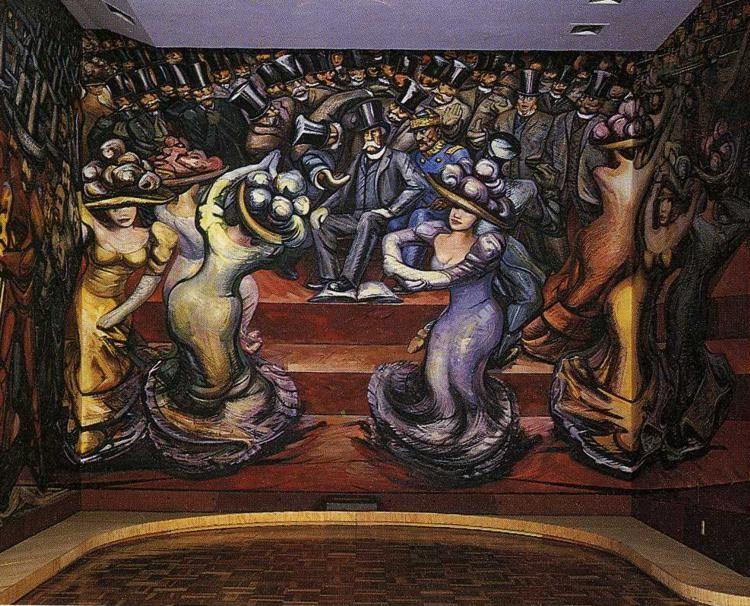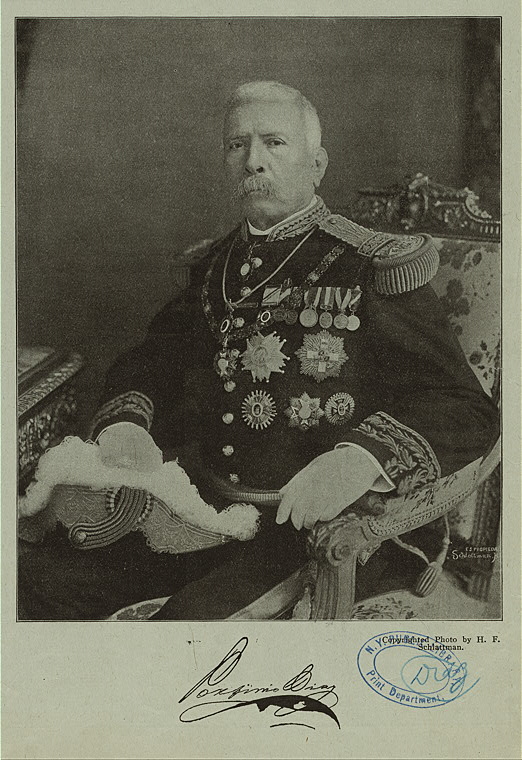Colección Porfirio Díaz, Legajo 10, Documento 3693
Felipe Arellano, periodista, Nueva York, to Presidente Porfirio Diaz
30 de mayo, 1885
Informa que en San Luis Misouri acordó con el señor Busch la creación de una cervecería en México. Informa que partieron las personas encargadas de estudiar el terreno de la nueva cervecería, a cargo del señor Haussman
Mr. Busch, of St. Louis Missouri, is interested in establishing a brewery in Mexico. Those in charge of finding and studying the parcel for the new brewery are on their way, under the direction of Mr. Haussman.
A century before Anheuser-Busch would invest in the Modelo company (maker of Corona, amongst other, more delicious, beers), apparently their interest was aroused by the possibilities of this as-not-yet beerful country.
A few weeks after this letter was sent, Díaz replied that he had not yet had the pleasure of meeting Mr. Haussman, but would give him all possible aid upon arrival. No further mention is to be found.
Archie (&) Vallance
Found Documents from a Year Abroad
Wednesday, September 29, 2010
Monday, September 27, 2010
Approaching Archie (&) Vallance
Somewhere near here, someone by the name of Archie Vallance or two people by the names of Archie and Vallance lived.
Helen Seargeant, San Antonio Nexapa, New York: Vantage Press, 1952.
This lovely map is from the memoir-ish San Antonio Nexapa by Helen Seargeant, published in 1952. I have yet to read it, but I am anticipating a quiet day or two, somewhere vaguely tropical, perhaps a hammock or a palapa, a good cup of cafe con leche, and a nice breeze. Maybe between the lemon tree and the orange tree, sitting on the wash rock. I can't imagine the wash rock to be terribly comfortable, though.
The book is based on the letters and memories of '...a pioneer American family' on a coffee plantation near Tapachula, and, as is insisted upon in the introduction, none of the characters are fiction. Why, then, does Archie Vallance appear '...early, bringing a lead horse' (p. 26) for Christmas, or as 'that other Scotsman' making 'a joke on Stevenson that made him lose his wig' (p. 78) or 'come to tell him about the English company' (113) in this book while Archie & Vallance are listed as a foreign company invested in the state in the Sección de Estadística of 1911?
I'll tell more as I find it.
Friday, September 24, 2010
Psst
Colección Porfirio Díaz, Legajo 5, Docúmento 2561
From Crisóforo García to President General Porfirio Díaz
July 7, 1880
Le solicita no creer los chismes que sobre su persona le comunican las señora Rarmírez.
Translation: Please ignore the gossip that the Ramírez ladies are spreading about me.
David Siqueiros, From the Dictatorship of Porfirio Diaz to the Revolution, detail, 1957-66 (borrowed from www.abcgallery.com until I can find another copy)
A favorite mural, part of a larger work that covers the entirety of one entry hall at Chapultapec Castle in the center of Parque Chapultepec in Mexico City. Originally a military college, the 'Castillo' became the home to numerous Mexican presidents, emperors, and, of course, Porfirio Díaz. After the Revolution, the government, specifically the Minister of Education, José Vasconcelos, began commissioning works by many of Mexico's preeminent artists to cover its public spaces, a tradition that continues into the present. David Siqueiros was not precisely in agreement with the government at all times - he completed parts of this work while technically in prison, allowed out for the day to paint - his works have come to be recognized as vital to the muralist movement. The revolutionaries who glare at these dancing ladies from across the hall grace the commemorative stamp that has been released this year to celebrate the Centennial of the Revolution.
From Crisóforo García to President General Porfirio Díaz
July 7, 1880
Le solicita no creer los chismes que sobre su persona le comunican las señora Rarmírez.
Translation: Please ignore the gossip that the Ramírez ladies are spreading about me.
David Siqueiros, From the Dictatorship of Porfirio Diaz to the Revolution, detail, 1957-66 (borrowed from www.abcgallery.com until I can find another copy)
A favorite mural, part of a larger work that covers the entirety of one entry hall at Chapultapec Castle in the center of Parque Chapultepec in Mexico City. Originally a military college, the 'Castillo' became the home to numerous Mexican presidents, emperors, and, of course, Porfirio Díaz. After the Revolution, the government, specifically the Minister of Education, José Vasconcelos, began commissioning works by many of Mexico's preeminent artists to cover its public spaces, a tradition that continues into the present. David Siqueiros was not precisely in agreement with the government at all times - he completed parts of this work while technically in prison, allowed out for the day to paint - his works have come to be recognized as vital to the muralist movement. The revolutionaries who glare at these dancing ladies from across the hall grace the commemorative stamp that has been released this year to celebrate the Centennial of the Revolution.
Thursday, September 23, 2010
Please, Sir, Save My Brother!
 Rómulo Farrera to Porfirio Díaz, August 10, 1899, Colección Porfirio Díaz, Legajo XXIV Documento 11518
Rómulo Farrera to Porfirio Díaz, August 10, 1899, Colección Porfirio Díaz, Legajo XXIV Documento 11518Firstly, I love the Farrera brothers. They all seem to have had type writers, which, if you haven't noticed, was not a common thing. Rómulo, Agustín, Luis, Círo... those are those for whom I have records, but it is likely that there were more. Part of one of the few surviving Mexican commercial families in the late 1890s - few could hold out against the connections of Germans and Americans - they were affluent enough and connected enough to stand in for the governor if occasion called for it.
Which, of course, caused problems. Círo was accused, by Governor León, of leading a plot against the standing government. Suddenly, the family found its business interests and social standing under threat. León sequestered Círo, dismissed his lawyers, and prevented family from seeing him. Agustín, then a Senator in the National Congress, rushed home to defend his brother, while Luis decided to abandon the family and stick by León, so proving his loyalty that when the president finally became involved, León suggested Luis as his replacement.
Francisco León to Porfirio Díaz, August 24, 1899, Colección Porfirio Díaz, Legajo 24, Documento 13506.
'I will freely leave in my place the brother of my enemy, as a gesture of my honor and gentlemanly qualities'
Of course the president became involved. The typed letter above, from Rómulo, is only one of a huge number from the family and from León, pleading for his intervention. Rómulo, though, seems to have best perfected the obsequious pleading.
"Given your vast experience, your deep knowledge of the human heart, matched by few in any country, I do not doubt that you have already decided on the exact judgment of what in this case is true and the motivations that have driven those involved in these events."
Díaz, of course, had made his judgment. Already not terribly fond of León's independence in decision making and project proposing, this accusation against Círo and a large group of other important Chiapanecos was the last straw. León was out, slowly of course, and with remuneration in the form of lands in Oaxaca, but definitively out.
The Farrera family is still involved in politics in Chiapas.
I think it was the typewriters.
Delay in posting brought to you by Telmex and faulty internet service.
Monday, September 20, 2010
An Autograph, Please
When my eyes get exhausted by microfiche, I turn to the indexes to search for more microfiche to exhaust my eyes in the coming days. The indexes at this particular archive are a mixed bag and, as I have found that the geographical and name based indexes included for the indexes are generally incomplete, I have taken to speed reading for words like Chiapas and café instead.
Two finds from today, just the index description, transcribed, as I do not photograph or scan the indexes (could be useful, I suppose):
Victoriano Tibajo to President General Porfirio Díaz
March 8, 1878
Informing Díaz that a revolutionary Movement in Chiapas confiscated his musical instruments. Please have them returned or cover their costs; it was the music of a military band.
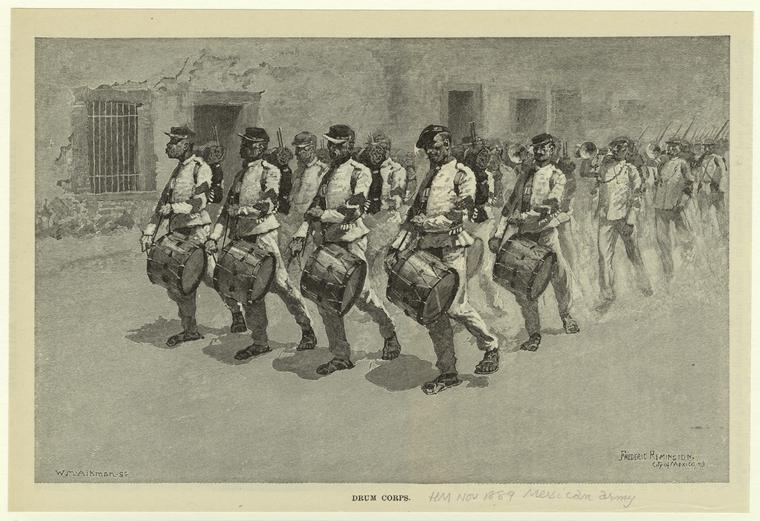 Frederic Remington, 'Drum Corps,' City of Mexico, 1889, New York Public Library Digital Gallery
Frederic Remington, 'Drum Corps,' City of Mexico, 1889, New York Public Library Digital Gallery
Claribel Wise of Winterset Madison to President General Porfirio Díaz
March, 1878
Congratulating Díaz for the peace he has brought to his country and the termination of differences between Mexico and the United States. Also, might he not send her an autographed photo?
When the photo was requested, he looked quite dashing, I suppose, perhaps like this:

'Porfirio Díaz,' Print Collection Portrait File, New York Public Library Digital Gallery
Or even this (look at that hair!):
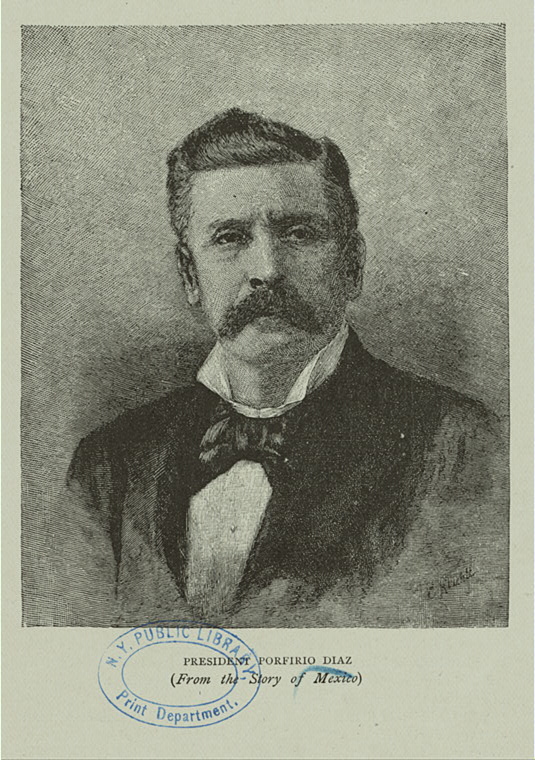 'Porfirio Díaz,' Print Collection Portrait File, New York Public Library Digital Gallery
'Porfirio Díaz,' Print Collection Portrait File, New York Public Library Digital Gallery
But this is the Díaz of whom we all think so fondly, autograph included:
Two finds from today, just the index description, transcribed, as I do not photograph or scan the indexes (could be useful, I suppose):
Victoriano Tibajo to President General Porfirio Díaz
March 8, 1878
Informing Díaz that a revolutionary Movement in Chiapas confiscated his musical instruments. Please have them returned or cover their costs; it was the music of a military band.
 Frederic Remington, 'Drum Corps,' City of Mexico, 1889, New York Public Library Digital Gallery
Frederic Remington, 'Drum Corps,' City of Mexico, 1889, New York Public Library Digital GalleryClaribel Wise of Winterset Madison to President General Porfirio Díaz
March, 1878
Congratulating Díaz for the peace he has brought to his country and the termination of differences between Mexico and the United States. Also, might he not send her an autographed photo?
When the photo was requested, he looked quite dashing, I suppose, perhaps like this:

'Porfirio Díaz,' Print Collection Portrait File, New York Public Library Digital Gallery
Or even this (look at that hair!):
 'Porfirio Díaz,' Print Collection Portrait File, New York Public Library Digital Gallery
'Porfirio Díaz,' Print Collection Portrait File, New York Public Library Digital GalleryBut this is the Díaz of whom we all think so fondly, autograph included:
Sunday, September 19, 2010
Weekend find - San Miguel Narcangel
If you had not heard, Mexico, like much of Latin America, is celebrating the bicentenial of its fight for independence from Spain this year. Fireworks! Giant inflatable Miguel Hidalgos! Mexican flags mailed to every household in the city! A five day weekend! An animated tale of the war of independence (which I really want to see, for cheese factors, if nothing else - look at her smirk)!
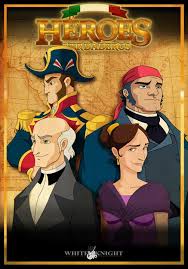
But, also, this movie

tag line - 'Mexico 2010 - Nothing to Celebrate'
Made by Luis Estrada, a Mexican film maker who proposes this as the final installment in a satiric trilogy about corruption, vacancy, and circular hopelessness in contemporary Mexico, this particular piece concerns the impossibility of the drug war and the drug trade in the north of the country. Extremely violent, taking Quentin Tarantino and the Coen brothers as inspiration, the movie is an overblown, semi-sarcastic, definitely uncomfortable, sometimes caricature of narco culture in the small towns and ranches of the vast spaces between the northern border and the larger cities of the center of the country.
Watched at home, without the context of its intended audience, this film might come across as a gross exaggeration, distasteful and ill-conceived. Yet, in a movie theater full of Mexicans exposed daily to the 'Nota Roja' sections of newspapers full of blood and gore and gruesome death, listening to them laugh as you cover your eyes, it becomes something entirely different. It is a movie made by someone who knows exactly how and when to elicit a laugh for maximum discomfort. A director and screenwriter who sprinkle criticism of law enforcement and politicians liberally throughout a piece that glamorizes and undermines simultaneously the riches that come from the drug trade.
Hardest, perhaps, to come to terms with as an outsider was the readiness of the audience to agree with particular criticisms of the rule of law, of characters who try to turn to justice rather than violence, of even the attempt to dismantle the drug trade. This is where it becomes inevitable. There is no commitment to Calderon's war against the cartels; it is just that - Calderon's war. Not the country's. And to become an informant, to approach the police, to turn in a murderer or act as a witness for the prosecution is not an option, let alone a heroic act. And, not living through it, built as it is upon a long history of political oligarchy and quiet, pervasive corruption that made any such honesty impossible.
But, also, this movie

tag line - 'Mexico 2010 - Nothing to Celebrate'
Made by Luis Estrada, a Mexican film maker who proposes this as the final installment in a satiric trilogy about corruption, vacancy, and circular hopelessness in contemporary Mexico, this particular piece concerns the impossibility of the drug war and the drug trade in the north of the country. Extremely violent, taking Quentin Tarantino and the Coen brothers as inspiration, the movie is an overblown, semi-sarcastic, definitely uncomfortable, sometimes caricature of narco culture in the small towns and ranches of the vast spaces between the northern border and the larger cities of the center of the country.
Watched at home, without the context of its intended audience, this film might come across as a gross exaggeration, distasteful and ill-conceived. Yet, in a movie theater full of Mexicans exposed daily to the 'Nota Roja' sections of newspapers full of blood and gore and gruesome death, listening to them laugh as you cover your eyes, it becomes something entirely different. It is a movie made by someone who knows exactly how and when to elicit a laugh for maximum discomfort. A director and screenwriter who sprinkle criticism of law enforcement and politicians liberally throughout a piece that glamorizes and undermines simultaneously the riches that come from the drug trade.
Hardest, perhaps, to come to terms with as an outsider was the readiness of the audience to agree with particular criticisms of the rule of law, of characters who try to turn to justice rather than violence, of even the attempt to dismantle the drug trade. This is where it becomes inevitable. There is no commitment to Calderon's war against the cartels; it is just that - Calderon's war. Not the country's. And to become an informant, to approach the police, to turn in a murderer or act as a witness for the prosecution is not an option, let alone a heroic act. And, not living through it, built as it is upon a long history of political oligarchy and quiet, pervasive corruption that made any such honesty impossible.
Friday, September 17, 2010
An Old Soldier's Lament
 Porfirio Diaz to Julian Grajales, November 25, 1892. Coleccion Porfirio Diaz, Legajo 17, Documento 017186.
Porfirio Diaz to Julian Grajales, November 25, 1892. Coleccion Porfirio Diaz, Legajo 17, Documento 017186.Essentially, this letter, in all its illegible, scratched out glory (I am sure I will become an expert at deciphering the hands of Diaz's secretaries before this is all over), simply says,
'Sorry, but there's not much I can do about it.'
Grajales, who must have been getting on in years by 1892, wrote to complain that despite his years of service, he had never been compensated for his humble bravery in the fight back 'in the year of '58' against 'the empire' (the French, of course, and their puppet Austrian, Maximilian) and then against Diaz's enemies until his party 'triumphed, for once and forever'.
 Julian Grajales to Porfirio Diaz. November 1, 1892. Coleccion Porfirio Diaz, Legajo 17, Documento 017185.
Julian Grajales to Porfirio Diaz. November 1, 1892. Coleccion Porfirio Diaz, Legajo 17, Documento 017185.If nothing else, I love this man's handwriting, so loopy and scratchy in a way that evokes an old soldier, sitting on his front porch in the lowlands of Chiapas, grumbling about the young whipper snappers in government who owe him their freedom and their respects. And who, of course, frequently forget that debt.
Diaz's response is painfully polite and obsequious, as befits a gentleman dictator. What makes his archive so rich is the degree to which the personalism that tinged all of governance during his reign was backed up by reams of letters such as this. Diaz was everyone's president (well, to a degree), and if you wrote to him, he would respond. Who knows that he ever followed through on his promise to remind Governor Rabasa of Grajales's service, but I am certain it made the man happy to receive such assurances of his value to his nation.
Or maybe it didn't.
A soldier from 1889, but add a few years onto him and stoop his back a bit, and this is how I picture Grajales, still ready to march out in defense of his president.
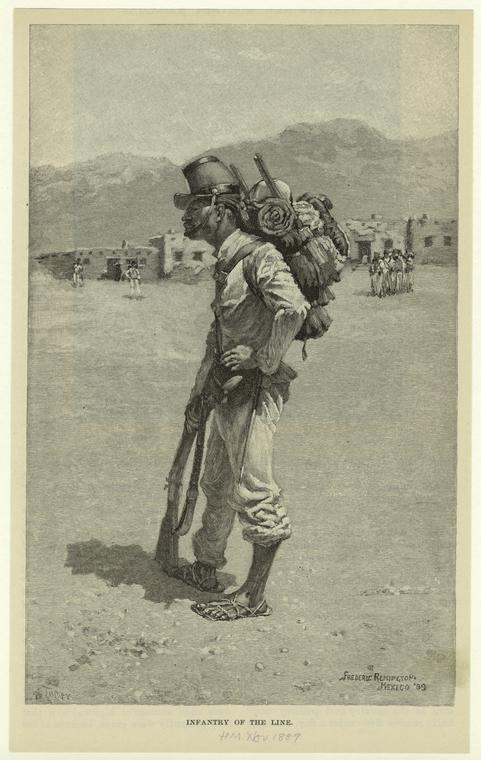
Subscribe to:
Posts (Atom)


